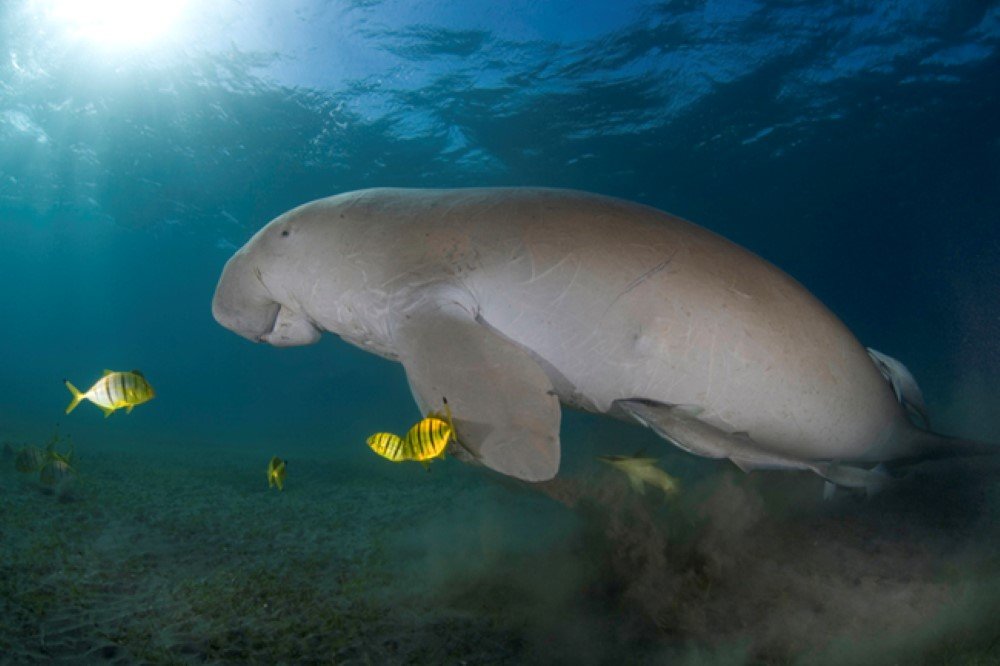Nets bad news for migrating dugongs

QUEENSLAND RESEARCHERS have used recent advances in GPS tracking to establish that migrating dugongs tend to swim near the shore, confirming why they’re so susceptible to getting caught in shark nets.
Dugongs are currently listed as a vulnerable species in Queensland, and nets are one of the greatest threats to their continued prosperity. When shark nets were first introduced in the 1960s, dugong death rates soared. In the first year of netting off Townsville, 82 dugongs were killed.
Understanding dugong migratory patterns is essential for the protection of the species. Scientists suspected dugongs migrated close to the shoreline, but it was impossible to establish before recent technological advances.
“The new technology has greatly reduced the time that the tag has to be at the surface to communicate with the satellites,” said Helene Marsh, a professor of environmental science at James Cook University (JCU) in Queensland. “It is now possible to track dugongs while they are swimming as well as when they are feeding and moving slowly.”

Dugongs are listed as vulnerable on the IUCN Red List, with shark nets mentioned as one of the major risks. (Image: Helene Marsh)
The team of researchers at JCU tracked four dugongs travelling between Hervey Bay near Bundaberg and Moreton Bay near Brisbane. The dugongs were fitted with special tail harnesses that allowed the researchers to record their positions hourly via satellite transmitters.
Of the four dugongs that undertook the 300km journey, three stayed within 5km of the coast.
The new research confirms that dugongs prefer to hug the shoreline when navigating between bays – the very place where shark nets are commonly installed.
“From this new information we can clearly understand why setting nets designed to catch large marine fauna in those dugong movement corridors is bad news for dugongs,” said Amanda Hodgson, a postdoctoral research fellow at Murdoch University in Western Australia, who wasn’t involved in this study.
The study validates the wisdom behind the removal of shark nets from dugong migration paths. For example, the replacement of shark nets with drumlines in many parts of the Great Barrier Reef, and the implementation of dugong protection areas since the 1990s has somewhat alleviated the dugong death rate in those areas. Records show that from 1989 to 2011, 39 dugongs drowned in shark nets in Queensland.
“From a conservation point of view, setting shark nets for bather protection is an unacceptable way of reducing shark attacks,” said Amanda, whose own research focuses on dugong responses to human activities.
Nevertheless, the NSW State Government is planning to introduce netting off its northern coast in response to a recent series of shark attacks. Helene said she is concerned such measures will lead to an increase in dugong deaths, but is sceptical her research will halt the procedures.
“I expect the NSW Government will prioritise concerns about human safety. This is a matter of competing values and should be decided by the community,” she said.
In the future, Helene wishes to use the new GPS technology to better understand the migratory pathways of other animals, so they may inform the management of commercial gill net fisheries.
The findings of the study have been published in the online journal Endangered Species Research.
READ MORE:
- GALLERY: Dugongs, the mermaids of Moreton Bay
- VIDEO: Wild dugongs of Moreton Bay
- Rare dugong sighting in southern NSW

